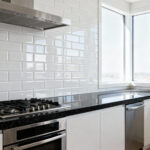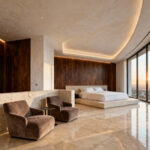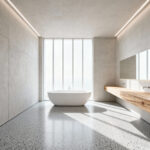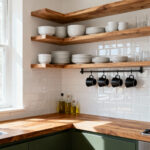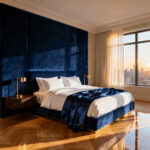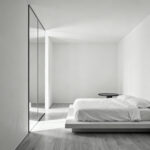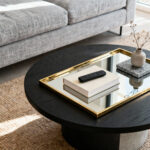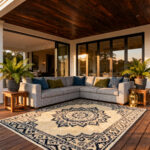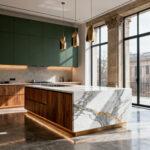Stepping into your apartment should feel like coming home to a space that truly reflects who you are. Yet many renters find themselves staring at blank walls and generic fixtures, wondering how to transform their temporary space into something that feels authentically theirs. The challenge isn’t just about making it look good—it’s about creating a functional sanctuary that works within the constraints of rental agreements, limited budgets, and often compact square footage.
The good news? Your apartment has incredible potential waiting to be unlocked. Whether you’re dealing with a studio’s open layout, a one-bedroom’s awkward corners, or any space that feels more like a placeholder than a home, strategic design choices can completely transform how you live and feel in your environment. From smart storage solutions that maximize every inch to damage-free decorating techniques that protect your security deposit, the right apartment decor inspiration can turn limitations into creative opportunities.
This comprehensive guide presents 21 actionable strategies that address the real challenges faced by apartment dwellers. Each idea is designed to be practical, budget-conscious, and adaptable to different styles and layouts. Get ready to discover how thoughtful design choices can transform your rental into the home you’ve always envisioned.
1. Define Your Design Aesthetic
Before making any purchases or rearranging furniture, the most crucial step in your apartment decor inspiration journey is defining your design aesthetic. This foundational process involves identifying the colors, textures, patterns, and overall mood that genuinely resonate with you, creating a roadmap for every subsequent decorating decision. Without this clarity, you’ll likely end up with a collection of random items that never quite gel into a cohesive space.

Start by gathering visual inspiration from various sources—Pinterest boards, Instagram accounts, design magazines, or even spaces you’ve admired in person. Pay attention to recurring elements that consistently catch your eye: Do you gravitate toward clean lines and minimal color palettes, or are you drawn to rich textures and bold patterns? Notice whether you prefer warm, earthy tones or cool, crisp hues. Create a digital mood board or collect physical samples to identify the common threads running through your preferences.
Key elements to consider when defining your style:
- Color preferences (warm vs. cool, bold vs. neutral, monochromatic vs. varied)
- Texture preferences (smooth vs. rough, natural vs. synthetic, matte vs. glossy)
- Pattern tolerance (geometric, organic, minimal, or maximalist)
- Furniture style (modern, traditional, industrial, bohemian, Scandinavian)
- Overall mood (energizing, calming, sophisticated, playful, cozy)
Once you’ve identified your core aesthetic preferences, create a simple three-word description of your ideal space—something like “warm, minimal, natural” or “bold, eclectic, cozy.” This becomes your filter for future purchases, helping you avoid impulse buys that don’t align with your vision and ensuring every element contributes to a harmonious whole.
What makes this foundation so crucial is how it transforms your apartment from a random collection of furniture into a thoughtfully curated environment that supports your daily life and reflects your personality.
2. Maximize Every Inch with Strategic Furniture Placement
Smart furniture placement can transform how your apartment functions and feels, making even the smallest spaces work harder for you. The key lies in understanding traffic flow, visual weight, and the psychological impact of different arrangements. Rather than pushing everything against walls—a common mistake in small spaces—strategic placement creates zones, enhances functionality, and can make rooms feel more spacious.

Begin by mapping your apartment’s natural traffic patterns and identifying how you use each space throughout the day. Consider floating furniture pieces away from walls to create depth and define separate areas within open layouts. For example, positioning a sofa perpendicular to a wall with a console table behind it can make a natural room divider while providing additional surface space for storage or display.
Essential placement strategies for small apartments:
- Float larger pieces to create depth and visual interest
- Use furniture backs as natural room dividers in open layouts
- Position seating to encourage conversation and optimize TV viewing angles
- Ensure clear pathways of at least 24 inches for comfortable navigation
- Angle furniture slightly to break up rigid, boxy arrangements
Multi-functional fur is our secret weapon in this process. Ottoman storage cubes can serve as extra seating, coffee tables, and hidden storage all at once. Dining tables that extend or fold down adapt to both daily use and entertaining needs. Console tables behind sofas create workspace during the day and display areas in the evening, maximizing the utility of every square foot.
The magic happens when you realize that thoughtful placement isn’t just about fitting everything in—it’s about creating a layout that actively enhances your experience of living in your space.
3. Embrace Vertical Storage Solutions
When floor space is at a premium, the solution lies in looking up. Vertical storage transforms unused wall space into functional, organized zones while drawing the eye upward to create an illusion of height. This approach is particularly powerful in apartments where every square foot counts, allowing you to store and display more without cluttering your living areas.

Wall-mounted shelving systems offer incredible flexibility for both storage and display. Floating shelves can hold books, plants, and decorative objects while maintaining a clean, modern look. Floor-to-ceiling bookcases maximize storage capacity and create impressive focal points. Over-door organizers capture otherwise wasted space, perfect for everything from shoes to cleaning supplies. The key is choosing solutions that complement your aesthetic rather than looking purely utilitarian.
Consider the visual weight and balance of your vertical installations. Mix closed storage (for items you want to keep hidden) with open display areas (for items you want to showcase). Vary the heights of objects on shelves to create visual interest, and leave some breathing room to prevent a cluttered appearance. Wall-mounted desks, Murphy beds, and fold-down tables take this concept further by providing full functionality that disappears when not in use.
As you master the art of vertical storage, you’ll discover that the walls themselves offer another opportunity for transformation through temporary, renter-friendly treatments.
4. Transform Walls with Removable Treatments
Blank walls are missed opportunities, but traditional solutions, such as paint or permanent wallpaper, aren’t always feasible in rentals. Removable wall treatments offer the perfect compromise, allowing you to add personality, color, and pattern without risking your security deposit. These solutions have evolved far beyond basic contact paper to include sophisticated options that rival permanent installations.

Peel-and-stick wallpaper is now available in thousands of patterns, ranging from subtle textures to bold geometric designs. The key to success lies in proper surface preparation—clean walls thoroughly and allow recently painted surfaces to cure for at least 30 days before application. Start with a small, inconspicuous area to test adhesion and removal, ensuring the product won’t damage your specific wall surface.
Popular removable wall treatment options:
- Peel-and-stick wallpaper for dramatic pattern or texture
- Removable wall decals for artistic accents
- Fabric panels attached with liquid starch for textile warmth
- Gallery walls using damage-free hanging systems
- Temporary murals for statement-making focal points
Beyond wallpaper, consider removable wainscoting panels, temporary tile treatments for kitchens and bathrooms, or even magnetic paint that creates functional surfaces. The goal is to create visual interest and personality while maintaining the flexibility to change your mind or restore the space to its original condition when you move.
The transformation these treatments can create sets the stage for building layers of comfort and style through the careful selection of textiles.
5. Layer Comfort with Strategic Textile Choices
Textiles are the quickest way to add warmth, color, and personality to any apartment. Unlike furniture or permanent fixtures, fabrics can be easily swapped, layered, and adjusted to create different moods or adapt to changing seasons. The strategic use of rugs, throw pillows, blankets, and window treatments transforms hard surfaces into inviting spaces, providing practical benefits such as sound absorption and temperature regulation.

Start with a foundation rug that anchors your main living area—it should be large enough that at least the front legs of your seating furniture rest on it. This creates visual cohesion and defines the space, particularly important in open-plan layouts. Layer smaller rugs for added texture and warmth, mixing materials such as jute, wool, and synthetic fibers to create depth and interest.
Window treatments deserve special attention in apartments, where you often can’t control the quality or direction of natural light. Layering sheer panels with heavier curtains gives you flexibility to adjust privacy and light levels throughout the day. Hanging curtains closer to the ceiling and extending them beyond the window frame creates an illusion of larger windows and higher ceilings—a simple trick that dramatically impacts spatial perception.
Textile layering strategies for maximum impact:
- Mix textures (smooth, nubby, fuzzy, woven) for tactile interest
- Vary the scales of patterns within the same color family
- Use throws and pillows to introduce seasonal colors
- Layer rugs of different sizes and materials for depth
- Choose window treatments that can adapt to different light needs
Once you’ve established this textile foundation, the next step is bringing life and natural beauty into your carefully curated space.
6. Integrate Living Elements for Natural Vibrancy
Plants do more than look good—they actively improve your living environment while connecting you to nature in an urban setting. The right selection of indoor plants can purify air, reduce stress, and create focal points that bring energy and life to any room. For apartment dwellers, plants offer an affordable way to add color, texture, and vertical interest while working within the constraints of artificial lighting and limited floor space.

Success with indoor plants starts with an honest assessment of your space’s conditions and your commitment level. Low-light plants, such as pothos, Spathoglottis, and ZZ plants, thrive in typical apartment conditions and can tolerate occasional neglect. If you have bright windows, consider statement plants like fiddle-leaf figs or monstera deliciosa, which can serve as living sculptures. For those with minimal natural light, LED grow lights have become increasingly sophisticated and can support a wider variety of plants.
Think beyond traditional floor pots to maximize your plant potential. Hanging planters draw the eye upward and save floor space, while wall-mounted systems create living art installations. Windowsill herb gardens offer fresh ingredients for cooking while adding a touch of greenery to kitchen spaces. Large floor plants in corners can soften harsh angles and create natural room dividers in open layouts.
The key to successful plant integration lies in choosing varieties that match your lifestyle and space conditions, then positioning them where they’ll thrive while enhancing your overall design aesthetic.
7. Create Zones in Open-Concept Spaces
Open-concept apartments offer flexibility but can feel undefined without careful planning and design. The challenge lies in creating distinct functional areas—living, dining, sleeping, working—within a single room while maintaining the sense of openness that makes these layouts appealing. Strategic zoning transforms potentially chaotic spaces into organized, purposeful environments.
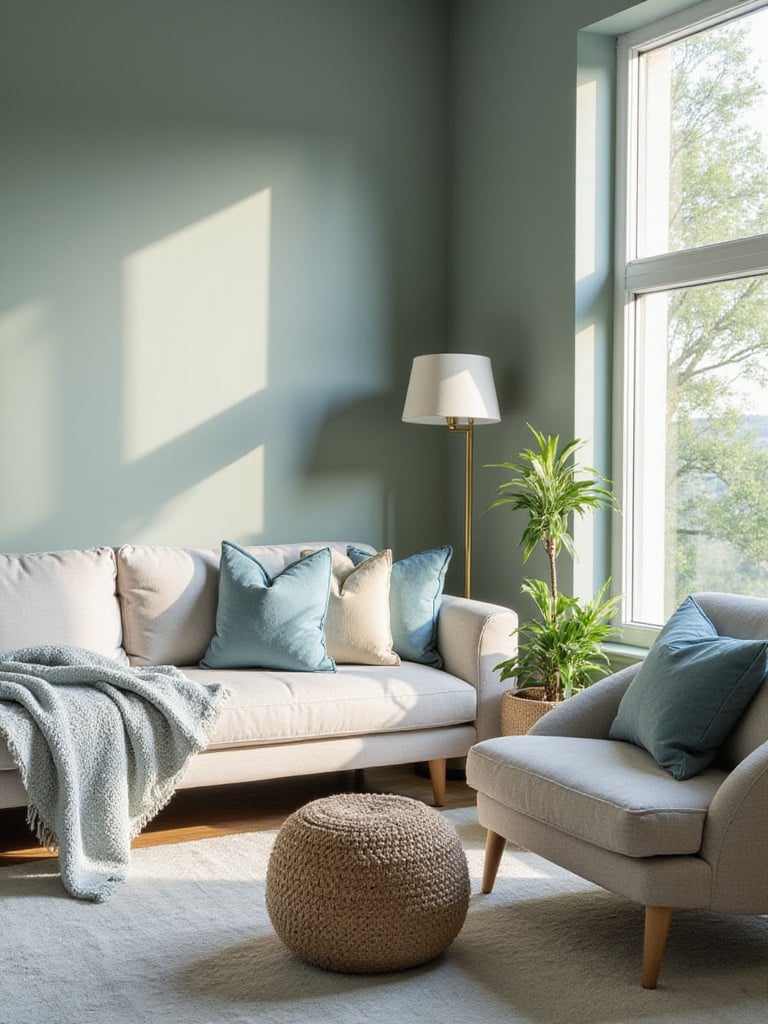
Furniture placement becomes your primary tool for creating invisible boundaries. A sofa positioned perpendicular to a wall naturally separates living and dining areas. Bookcases or tall plants can provide visual separation without blocking light or airflow. Area rugs define zones from the ground up, with different rugs signaling different functions—a plush carpet for the living area, a durable one under the dining table, a soft one beside the bed.
Effective zoning techniques for open layouts:
- Use furniture backs as natural room dividers
- Define areas with different lighting (pendant over dining, floor lamp by sofa)
- Vary ceiling heights with room dividers or hanging elements
- Create pathways that naturally guide movement between zones
- Use color or pattern changes to signal different areas
Lighting plays a crucial supporting role in zoning, with different types of illumination reinforcing the distinct purposes of each area. Pendant lights over a dining table, task lighting in a work zone, and ambient lighting in relaxation areas help your brain recognize and adapt to different activities within the same space.
The success of zoning lies in creating definition without sacrificing the openness that makes these layouts so appealing in the first place.
8. Optimize Lighting for Mood and Function
Most apartments come with basic overhead lighting that creates harsh shadows and does little to enhance the space’s atmosphere. Layered lighting—combining ambient, task, and accent sources—transforms flat, institutional-feeling spaces into warm, inviting homes. The key is understanding how different types of light serve various purposes and learning to control them independently.

Ambient lighting provides overall illumination and sets the general mood of a space. This might come from ceiling fixtures, floor lamps, or wall sconces, but it should be diffused and comfortable rather than harsh and direct. Task lighting focuses on specific activities, such as reading lamps, under-cabinet kitchen lighting, or desk lamps for work areas. Accent lighting highlights architectural features, artwork, or plants, adding depth and visual interest to rooms.
The magic happens when you can control these layers independently, adjusting brightness and warmth throughout the day to match your activities and energy levels. Dimmer switches, smart bulbs, and multiple light sources give you this flexibility. Warm light (2700K-3000K) creates cozy, relaxing atmospheres perfect for evening wind-down, while cooler light (3500K-4100K) promotes alertness and focus during daytime activities.
Essential lighting elements for apartment living:
- Multiple sources at different heights (table lamps, floor lamps, overhead)
- Dimmable options for mood adjustment
- Task-specific lighting for reading, cooking, and working
- Accent lighting to highlight favorite features or artwork
- Natural light management through strategic window treatments
As you master the interplay of light and shadow, you’ll discover how proper illumination can make even the smallest apartment feel spacious and welcoming.
9. Maximize Storage While Maintaining Style
Effective storage in apartments requires thinking beyond traditional solutions to find opportunities in unexpected places. The goal is to increase your storage capacity without sacrificing style or making your space feel cluttered. This means selecting pieces that serve a dual purpose and incorporating necessary storage elements into your overall aesthetic.

Under-utilized spaces offer the greatest potential for storage expansion. The area under beds can accommodate rolling storage boxes or drawers. Ottoman storage cubes provide seating and hidden storage simultaneously. Console tables with drawers or shelves add surface space while concealing clutter. Wall-mounted cabinets extend storage upward without consuming floor space.
The key to stylish storage lies in choosing pieces that complement your design aesthetic, rather than prioritizing purely functional elements. Woven baskets add texture while hiding miscellaneous items. Vintage trunks serve as coffee tables and storage simultaneously. Built-in looking solutions like floor-to-ceiling shelving create custom appearances in rental spaces.
Storage solutions that enhance rather than detract from style:
- Ottoman storage cubes that double as seating or tables
- Decorative baskets and bins that add texture while organizing
- Console tables with hidden storage compartments
- Wall-mounted cabinets that look like intentional design elements
- Under-bed storage that’s completely hidden from view
The most successful storage solutions are those that address practical problems while enhancing the overall beauty and functionality of your space.
10. Incorporate Personal Collections and Memories
Your apartment should tell your story, and personal collections provide some of the most meaningful apartment decor inspiration available. Whether it’s vintage cameras, travel souvenirs, books, or handmade pottery, displaying cherished items creates emotional connections to your space while adding unique character that can’t be purchased from a catalog.

The art of displaying collections lies in curation and presentation. Rather than showing everything you own, select pieces that work well together visually and represent different aspects of your interests or experiences. Group similar items together for impact, but vary heights, sizes, and orientations to create visual interest. Use negative space strategically—not every surface needs to be filled.
Consider the story you want your collections to tell and how they interact with your overall design aesthetic. A collection of blue and white ceramics might anchor a coastal-inspired color scheme, while vintage brass instruments could complement an industrial loft aesthetic. The goal is integration rather than distraction, allowing personal items to enhance rather than compete with your design vision.
Lighting plays a crucial role in showcasing collections effectively. Picture lights, small spotlights, or even strategically placed table lamps can highlight favorite pieces and create focal points that draw the eye and invite closer inspection.
11. Design Functional Work-from-Home Spaces
The reality of modern apartment living often requires creating productive work environments within spaces originally designed purely for relaxation. The challenge lies in establishing boundaries between work and personal life while maintaining the aesthetic and functional integrity of your living space. Successful home offices in apartments require creativity, organization, and smart space planning.

Dedicated desk space doesn’t always mean a traditional office setup. A console table behind a sofa can serve as a workspace during the day and a display area in the evening. Wall-mounted fold-down desks provide full functionality when needed but disappear completely when not in use. Even a well-organized corner with a comfortable chair and good lighting can become a productive work zone.
Essential elements for apartment workspaces:
- Adequate task lighting to reduce eye strain
- Ergonomic seating that supports long work sessions
- Organized storage for supplies and paperwork
- Technology solutions for cables and device charging
- Visual separation from relaxation areas when possible
The key to successful work-from-home integration lies in creating psychological boundaries even when physical separation isn’t possible. This might involve using a room divider screen, adjusting the lighting when transitioning between work and personal time, or establishing rituals that signal the start and end of the workday.
Beyond pure functionality, your workspace should inspire productivity and creativity while fitting seamlessly into your overall design scheme.
12. Embrace Seasonal Refresh Strategies
One of the most effective ways to keep your apartment feeling fresh and current is through seasonal updates that don’t require major investments or permanent changes. This approach enables you to adapt your space to changing weather conditions, holidays, and your evolving preferences, all while working within a rental budget and timeline.

The foundation of successful seasonal decorating lies in maintaining a neutral base that can accommodate different accent colors and textures throughout the year. Swap throw pillows, blankets, and small accessories to reflect seasonal moods—warm, rich tones for fall and winter, fresh, light colors for spring and summer. Replace artwork or photographs with new ones to match seasonal themes or to add visual variety.
Natural elements provide some of the most effective seasonal updates. Fresh flowers, branches, or seasonal produce can instantly and affordably transform a space. Scented candles or diffuser oils can reinforce seasonal atmospheres—pine and cinnamon for winter, citrus and herbs for spring, ocean and lavender for summer.
Simple seasonal refresh strategies:
- Swap textiles (pillows, throws, curtains) for different colors and textures
- Change artwork or photography to reflect seasonal themes
- Incorporate natural elements like flowers, branches, or seasonal produce
- Adjust lighting warmth and intensity to match seasonal moods
- Rearrange furniture to optimize natural light and airflow
The beauty of seasonal decorating lies in its ability to make your space feel constantly renewed without requiring major investments or permanent changes.
13. Create Cozy Reading and Relaxation Nooks
Every apartment needs a designated space for quiet activities and mental decompression, even if it’s just a well-appointed corner with comfortable seating and good lighting. These personal retreats provide essential balance in busy lives while making efficient use of otherwise underutilized spaces.

The perfect reading nook combines comfortable seating, adequate lighting, and easy access to books or other relaxation materials. This doesn’t necessarily require a lot of space—a comfy chair by a window with a side table and lamp can be just as effective as an elaborate built-in bench. The key is creating a sense of enclosure and purpose that signals to your brain that this space is for relaxation.
Consider the sensory experience of your relaxation space. Soft textures invite lingering, while harsh surfaces encourage quick transitions. Warm lighting promotes relaxation, while cool light maintains alertness. Natural elements, such as plants or views of the outdoors, enhance the restorative qualities of these spaces.
Storage for books, magazines, or craft supplies should be within easy reach but organized enough that the space doesn’t feel cluttered. A small basket, floating shelf, or side table with drawers can provide necessary storage without overwhelming the peaceful atmosphere you’re trying to create.
The most successful relaxation nooks are those that feel distinctly separate from the productive or social areas of your apartment, providing a true mental and physical retreat.
14. Maximize Natural Light and Views
Natural light is one of the most valuable assets in any apartment, influencing everything from mood and energy levels to the appearance of colors and the perception of spaciousness. Maximizing and managing natural light requires understanding how it moves through your space throughout the day and making strategic choices about window treatments, furniture placement, and reflective surfaces.

Window treatments should provide privacy and light control without completely blocking natural illumination. Layered approaches work best—sheer panels that maintain privacy while allowing light, combined with heavier curtains or blinds for complete darkness when needed. Hanging treatments higher and wider than the actual window creates an illusion of larger windows and more abundant light.
Mirrors strategically placed opposite or adjacent to windows can effectively double the impact of natural light, creating the illusion of expanded space. Light-colored walls and surfaces reflect rather than absorb available light, making rooms feel brighter and more open. Furniture placement should avoid blocking windows or creating barriers to light flow throughout the space.
Strategies for maximizing natural light:
- Use sheer or light-filtering window treatments during the day
- Position mirrors to reflect and amplify available light
- Choose light-colored paint and furnishings to enhance reflection
- Avoid placing large furniture directly in front of windows
- Keep window areas clean and uncluttered for maximum light penetration
Even apartments with limited natural light can feel bright and airy with the right strategies for capturing, reflecting, and amplifying the available light.
15. Incorporate Smart Home Technology
Modern apartment living can be significantly enhanced through the thoughtful integration of smart home technology, which improves convenience, security, and energy efficiency without requiring permanent installations or landlord permission. The key is choosing solutions that are portable, renter-friendly, and genuinely useful rather than just trendy.

Smart lighting systems enable you to control brightness, color temperature, and scheduling from your phone, creating the perfect ambiance for various activities throughout the day. Smart plugs can turn any device into a connected appliance, allowing for remote control and scheduling of lamps, fans, or small appliances. Voice assistants can control multiple devices while providing entertainment, information, and communication capabilities.
Climate control improvements, such as smart thermostats (where permitted) or portable smart AC units and fans, can significantly enhance comfort while potentially reducing energy costs. Smart security devices, such as doorbell cameras, motion sensors, and smart locks (with the landlord’s approval), enhance safety and peace of mind.
The most valuable smart home additions are those that solve real problems or genuinely improve daily life rather than just adding complexity. Focus on devices that integrate well together and can be easily removed when you move, protecting your investment while avoiding conflicts with lease agreements.
Renter-friendly smart home essentials:
- Smart bulbs and light strips for customizable lighting
- Smart plugs for remote device control and scheduling
- Portable smart speakers for entertainment and home control
- Smart security cameras and sensors that don’t require permanent installation
- Smart thermostats or climate control devices were permitted
The goal is to create a more responsive and comfortable living environment that adapts to your needs and preferences throughout the day.
16. Address Common Apartment Challenges
Every apartment comes with its own set of challenges—awkward layouts, limited storage, noise issues, or architectural quirks that seem impossible to work around. The key to successful apartment decor inspiration lies in viewing these challenges as opportunities for creative solutions rather than insurmountable problems.

Noise control in apartments with thin walls or hard surfaces can be addressed through the strategic use of soft furnishings, wall hangings, and even specialized acoustic panels designed to resemble artwork. Area rugs, heavy curtains, and upholstered furniture all contribute to sound absorption while enhancing comfort and style.
Awkward architectural elements, such as exposed pipes, odd angles, or unsightly fixtures, can often be camouflaged or incorporated into the design scheme rather than being hidden. Exposed pipes might be painted to match walls or even highlighted as industrial design elements. Odd corners can become cozy reading nooks or display areas for plants and collections.
Common apartment challenges and solutions:
- Thin walls: Add soft furnishings and wall hangings for sound absorption
- Limited storage: Utilize vertical space and multi-functional furniture
- Awkwalayouts: Use furniture placement to create better flow and definition
- Poor lighting: Layer multiple light sources for better illumination
- Lack of character: Add personality through textiles, artwork, and personal collections
The most successful apartment designs are those that work with rather than against the space’s inherent characteristics, finding ways to turn potential negatives into distinctive positives.
17. Budget-Conscious Decorating Strategies
Creating a beautiful, functional apartment doesn’t require unlimited funds—it requires creativity, patience, and strategic thinking about where to invest your decorating dollars for maximum impact. The key lies in understanding which elements provide the biggest visual and functional returns on investment.

Thrift stores, estate sales, and online marketplaces provide opportunities to find unique pieces at a fraction of the retail cost. The trick is shopping with a clear vision of your aesthetic goals and being willing to see potential in pieces that might need minor repairs or updates. A solid wood dresser with good bones can be transformed with new hardware and a fresh coat of paint for far less than buying a new one.
DIY projects can stretch budgets significantly while adding personal touches that make your space truly unique. Simple updates, such as painting furniture, creating artwork, or sewing custom pillow covers, can have a dramatic impact for minimal cost. The key is choosing projects that match your skill level and available time, focusing on high-impact changes rather than complex renovations.
Budget-maximizing strategies:
- Invest in a few key pieces rather than many mediocre items
- Shop secondhand for unique finds that can be updated or repurposed
- Focus DIY efforts on high-impact, low-skill projects
- Use paint and textiles to create major changes affordably
- Prioritize purchases that serve multiple functions
The most successful budget decorating approaches focus on creating maximum impact through strategic choices rather than trying to furnish entire spaces at once.
18. Maintain and Evolve Your Space
A beautifully decorated apartment requires ongoing attention to maintain its appeal and functionality over time. This doesn’t mean constant redecorating, but rather developing systems and habits that keep your space organized, clean, and responsive to your changing needs and preferences.

Regular decluttering prevents the accumulation of items that no longer serve your needs or aesthetic goals. Seasonal reviews of your belongings—clothes, books, kitchen items, decorative objects—help maintain the curated feel that makes small spaces work effectively. The key is being honest about what you use and enjoy versus what you keep out of habit or obligation.
Maintenance of your decorating investments extends their lifespan and keeps your space looking its best. This includes regular cleaning of textiles, dusting of surfaces and artwork, care of plants, and minor repairs before they become major problems. Consistent attention prevents the need for major overhauls.
Maintenance strategies for long-term success:
- Establish regular cleaning and organizing routines
- Address minor repairs and maintenance issues promptly
- Rotate seasonal items to prevent wear and maintain freshness
- Reassess and declutter possessions regularly
- Document successful arrangements and color combinations for future reference
As your life circumstances change—such as a new job, a changing relationship, or evolving interests—your space should grow with you, rather than remaining static.
19. Create Memorable Entertaining Spaces
Even the smallest apartment can accommodate guests and social gatherings with thoughtful planning and flexible arrangements. The key lies in creating spaces that can adapt to different group sizes and activities while maintaining the comfort and style that make your apartment feel like home.

Flexible seating arrangements are more effective than fixed furniture in small spaces. Ottoman storage cubes can provide extra seating when needed and tuck away when not in use. Floor cushions offer casual seating options that store easily. Folding chairs can be stylish and functional when chosen carefully, providing extra seating without permanent space commitment.
Lighting becomes especially important for entertaining, as it sets the mood and helps guests feel comfortable and welcome. Dimmable options allow you to adjust brightness for different activities—brighter for dinner preparation, softer for conversation, and relaxation. Candles add warmth and ambiance while providing backup lighting options.
Entertaining essentials for small apartments:
- Flexible seating that can be rearranged or stored as needed
- Adequate lighting with dimming options for different moods
- Efficient serving and storage solutions for food and drinks
- Clear pathways that allow comfortable movement during gatherings
- Background music systems that don’t overwhelm conversation
The goal is to create an atmosphere where guests feel comfortable and welcome while maintaining the functionality and style that make your apartment work for daily life.
20. Plan for Future Moves and Changes
One of the realities of apartment living is that most arrangements are temporary, whether due to lease changes, job relocations, or evolving housing needs. Smart decorating choices consider this reality, focusing on investments that can adapt to various spaces and circumstances rather than being tied to a single specific layout or location.

Portable and adaptable furnishings provide better long-term value than built-in or custom solutions in rental situations. Modular shelving systems can be easily reconfigured to fit different spaces. Furniture with standard dimensions is compatible with a wider variety of layouts. Neutral color schemes adapt more easily to various architectural styles and lighting conditions.
Documentation of successful arrangements—through photos or sketches—helps you recreate appealing combinations in new spaces. Keep records of paint colors, measurements, and supplier information for items you love, making it easier to replicate or build upon successful design choices in future homes.
Strategies for portable decorating success:
- Choose furniture and accessories that work in multiple room configurations
- Invest in quality pieces that will last through numerous moves
- Document successful color combinations and arrangements for future reference
- Prioritize items that pack and transport easily without damage
- Build relationships with suppliers and services that can help in new locations
The most successful apartment decorating approaches strike a balance between immediate enjoyment and future flexibility, creating beautiful spaces that can evolve with changing circumstances.
21. Develop Your Personal Design Confidence
The ultimate goal of any apartment decor inspiration journey is to develop the confidence to trust your instincts and preferences, rather than relying entirely on external validation or trending styles. This confidence stems from understanding basic design principles, experimenting with various approaches, and learning from both successes and failures.

Start by paying attention to spaces that make you feel comfortable and inspired, whether they’re friends’ homes, restaurants, hotels, or images in magazines. Analyze what specifically appeals to you—is it the color combination, the lighting, the furniture arrangement, or the overall mood? This analysis helps you understand your preferences at a deeper level than “I like it.”
Experimentation within your own space builds practical experience and confidence. Try different furniture arrangements, swap accessories between rooms, or test new color combinations through easily changed elements like pillows or artwork. Small experiments offer valuable learning opportunities with minimal commitments and expenses.
Building design confidence through practice:
- Analyze spaces you find appealing to understand why they work
- Experiment with small changes before making major commitments
- Trust your instincts about what feels comfortable and authentic
- Learn from mistakes rather than viewing them as failures
- Seek inspiration from many sources while maintaining your vision
The most successful apartment designs are those that reflect their inhabitants’ authentic preferences and lifestyles rather than trying to recreate someone else’s vision of perfection.
Conclusion
Transforming your apartment into a space that truly feels like home is one of the most rewarding investments you can make in your daily quality of life. These 21 strategies provide a comprehensive roadmap for creating beautiful, functional living spaces that work within the constraints of rental agreements, limited budgets, and compact layouts. The key to success lies not in implementing every suggestion, but in choosing the approaches that best address your specific challenges and align with your personal style preferences.
Remember that great apartment decor inspiration comes from understanding that limitations can spark creativity rather than stifle it. Small spaces compel you to be intentional about every choice, resulting in more curated and personally meaningful environments. Rental restrictions encourage you to find innovative, non-permanent solutions that often prove more flexible and adaptable than traditional approaches. Budget constraints push you toward creative solutions and unique finds that add character, impossible to achieve through purely retail purchases.
Your apartment has the potential to be far more than just a place to sleep and store your belongings—it can be a true sanctuary that supports your goals, reflects your personality, and provides the foundation for a life well-lived. Start with one or two strategies that resonate most strongly with your current situation, and build from there as your confidence and experience grow. The most beautiful apartments are those that evolve organically over time, shaped by their inhabitants’ changing needs and increasing design confidence.

